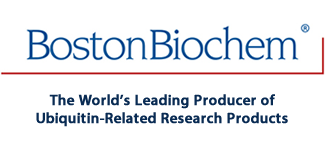
Recombinant Human His6-OTUD7B/Cezanne Protein, CF Summary
Product Datasheets
Carrier Free
CF stands for Carrier Free (CF). We typically add Bovine Serum Albumin (BSA) as a carrier protein to our recombinant proteins.Adding a carrier protein enhances protein stability, increases shelf-life, and allows the recombinant protein to be stored at a more dilute concentration.The carrier free version does not contain BSA.
In general, we advise purchasing the recombinant protein with BSA for use in cell or tissue culture, or as an ELISA standard.In contrast, the carrier free protein is recommended for applications, in which the presence of BSA could interfere.
E-562
| Formulation | X mg/ml (X μM) in 50 mM Hepes pH 7.5, 100 mM NaCl, 1 mM TCEP |
| Shipping | The product is shipped with dry ice or equivalent. Upon receipt, store it immediately at the temperature recommended below. |
| Stability & Storage: | Use a manual defrost freezer and avoid repeated freeze-thaw cycles.
|
Reconstitution Calculator
Background: OTUD7B/Cezanne
OTU domain-containing protein 7B (OTUD7B), also known as cellular zinc finger anti-NF-kappaB (Cezanne), is a C64 type peptidase and a member of the ovarian tumor (OTU) protein super-family with a predicted molecular weight of 93 kDa (1). The human protein shares 90% amino acid sequence identity with its mouse ortholog. Cezanne has been reported to cleave K48-, and K63-linked poly-Ubiquitin chains, and also to display a preference for K11-linked chains (1-3). It has been shown to play a role in the negative regulation of NF-kappa B signaling, possibly by deubiquitination of RIPK1 and TRAF3 (2,4).
- Evans, P.C. et al. (2003) J. Biol. Chem. 278: 23180.
- Enesa, K. et al. (2008) J. Biol. Chem. 283: 7036.
- Bremm, A. et al. (2010) Nat. Struct. Mol. Biol. 17: 939.
- Hu, H. et al. (2013) Nature 494:371.
FAQs
No product specific FAQs exist for this product, however you may
View all Proteins and Enzyme FAQsReviews for Recombinant Human His6-OTUD7B/Cezanne Protein, CF
There are currently no reviews for this product. Be the first toreview Recombinant Human His6-OTUD7B/Cezanne Protein, CF and earn rewards!
Have you used Recombinant Human His6-OTUD7B/Cezanne Protein, CF?
Submit a review and receive an Amazon gift card.
$25/€18/£15/$25CAN/¥75 Yuan/¥1250 Yen for a review with an image
$10/€7/£6/$10 CAD/¥70 Yuan/¥1110 Yen for a review without an image
ebiomall.com






>
>
>
>
>
>
>
>
>
>
>
>
微生物吸收营养和排出废弃物都需要通过细胞膜。而细胞膜是磷脂双分子层结构,无论是亲水物质还是疏水物质都无法通过细胞膜。
细胞膜上镶嵌有蛋白质,叫转运蛋白。蛋白质既有疏水基团,又有亲水基团,正是靠蛋白质的这种特殊结构,能够与两类物质结合,并通过蛋白质结构的细微变化,把这两类物质运送到细胞膜的另一侧。
所以,微生物吸收营养物质必须用镶嵌在细胞膜上的转运蛋白来实现。
硝酸根从根向地上部茎的长距离运输过程中首先要进行木质部的装载。台湾科学家发现NRT1.5是一个低亲和且依赖于pH的双向转运蛋白,位于质膜并在靠近木质部的中柱鞘细胞中表达,对于硝酸根在木质部的装载具有重要作用。
所以NRT1.5是双向性的转运蛋白
代谢通路:目前在通路数据库(PATHWAY database) 中代谢通路是建立得最好的,有大约90个参考代谢途径的图形。每个参考代谢途径是一个由酶或EC号组成的网络。
InVitroCharacterizationofAxitinibInteractionswithHumanEffluxandHepaticUptakeTransporters:ImplicationsforDispositionandDrugInteractions.
ReynerEL,etal.(2013)DrugMetabDispos.41(8):1575-83.(IF:3.361)
【摘要】阿西替尼是血管内皮生长因子酪氨酸激酶受体1,2,3的抑制剂。阿西替尼的ATP结合盒转运体(ABC)和溶质转运蛋白(SLC)性质受所选择的蜂窝系统决定。所有的细胞体系试验测定发现,阿西替尼展现高的透膜特性(Papp≥6×10-6cm/s)。主动外排作用首先采用Caco-2细胞观测的;然后选择多药耐药基因1(MDR1)或乳腺癌耐药蛋白(BCRP)转染的犬肾传代细胞2(MDCK)进行深入地评估,结果提示除了BCRP之外,阿西替尼还是P-gp的一个弱的底物。在Caco-2细胞实验中发现,阿西替尼对P-gp协调转运体底物地高辛有部分的抑制作用;而在BCRP转染的MDCK细胞实验中发现,阿西替尼对BCRP转运体底物托普乐肯也有部分抑制作用,相应的IC50值分别为3mM和4.4mM。按照当前的法规指南,10mg的阿西替尼不会造成对P-gp及PCRP的药物相互作用。
然而,由于口服给药10mg(服用250mL水)的阿西替尼的浓度是IC50值的十倍,因此认为在胃肠道中该药对P-gp和BCRP有潜在的药物相互作用的风险。但是,通过GastroPlus软件模拟发现,由于阿西替尼的低溶解度会导致其在胃肠道中的浓度较低,因此在胃肠道中产生对P-gp和BCRP底物相互作用的风险也较低。转运阿西替尼至一小量并被悬浮的肝细胞摄取的有机阴离子转运多肽1B1(OATP1B1)和OATP1B3转染的人胚肾293(HEK293)细胞,是不受利福平SV抑制的,提示该药物被动渗透占据主导地位。采用小鼠全身放射显影技术,将阿西替尼进行C14标记,结果显示除了脑部组织外,阿西替尼能够快速地在各个组织中吸收和分布。该结果表明阿西替尼的外排转运作用将发生在小鼠的血脑屏障中。
2.【代谢酶】:通过计算机模拟建模的方法研究P-gp和CYP3A4的底物UK-343,664的非线性吸收药动学
InSilicoModelingfortheNonlinearAbsorptionKineticsofUK-343,664:AP-gpandCYP3A4Substrate.
AbuasalBS,BolgerMB,WalkerDK,KaddoumiA.(2012)MolPharm.9:492-504.(IF:4.57)
【摘要】UK-343,664是P-gp和CYP3A4所介导的底物,本文旨在通过该化合物的体外数据和临床前的动物数据去外推在人体的药动行为。另外,该研究通过高级隔室吸收和转运的模型(ACAT)搭建了化合物相应的吸收模型,从而去诠释UK-343,664由于P-gp和CYP3A4所介导引起的非线性吸收、首过效应等多种机制相互作用的药动行为。最后,对模型预测的结果和临床实测的结果进行了对比。在体灌流、异数放大、生理的PBPK方法、体外的代谢数据和适当的体内数据可以被用来分别解释药物在机体内的吸收、分布和代谢行为。GastroPlus可以很好的将以上信息整合起来,便于搭建UK-343,664的生理人体模型,从而机制性的去解释临床口服给予30、100、200、400和800mg的药动行为。CYP3A4的体外Km=465μM(假设17.8%的微粒体结合进行校正)和CYP2C8,2C9,2C19,2D6和3A4(38.9pmol/min/pmol)的Vmax被用来模拟预测肝脏的首过和系统清除率。CYP3A4的体外Km,Vmax和2D6的Vmax被用来模拟预测胃肠道中的首过现象。P-gp的Km和Vmax是通过拟合体内药动行为获取的,并且被用来模拟胃肠道中的外排转运。通过对比虚拟敲除P-gp或胃肠道中代谢酶后UK-343,664的吸收百分数、到达门静脉的吸收量和在胃肠道中被代谢的量,进一步去探讨P-gp和CYP3A4在肠道中所介导的相互作用。通过对比模拟和实测的结果发现在30-800mg的临床给药范围内,计算机辅助的建模和模拟方法可以很好的诠释和表征UK-343,664的体内非线性药动行为。GastroPlus所模拟预测的AUC和Cmax和实测值非常的吻合和接近。该模型可以很好的解释和表征UK-343,664在体内的真实药动行为,并且暗示随着剂量的递增,体内呈现非线性的行为可能归功于外排转运体P-gp和肠道代谢酶所引起的。然而,在该浓度范围内P-gp和酶的饱和并不是重叠的,因此导致的体内药动行为和单纯的随剂量递增AUC增加的情况相比有较大的区别。当低剂量的时候,肠腔内的浓度在P-gp拟合的Km之下,P-gp起到保护作用,进行药物的外排,将导致UK-343,664在胃肠道中被3A4首过的代谢量减少,当高剂量的时候,随着P-gp趋于饱和,UK-343,664在胃肠道中被3A4首过的代谢量增加,最后当给药剂量达到最大时,3A4出现饱和,UK-343,664在胃肠道中被3A4首过的代谢量又开始减少,如此复杂的体外体内外推是生理吸收模型突显其价值和意义的另一个代表力作。
http://www.pharmogo.com/
In-Vitro-Characterization-Axitinib-Interactions-Human-Efflux-Heptaic-Uptake-Transporters.pdf(471.67k)
InSilicoModelingfortheNonlinearAbsorptionKineticsofUK-P-gpandCYP3A4Substrate.pdf(2221.56k)
另外在八版生理248页第二段,近端小管后半段氯离子通过氯离子碳酸氢根交换体被重吸收,此时小管液中氯离子浓度大于周围组织液氯离子浓度,所以也有细胞旁途径顺浓度被动重吸收,然而资料上的总结和题目里都是说氯离子在近端小管的重吸收为被动重吸收,感觉有些糊涂。希望来个大神指点一二。









